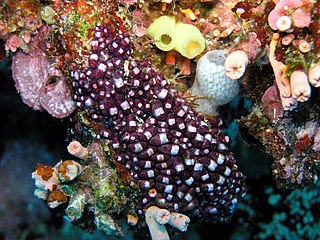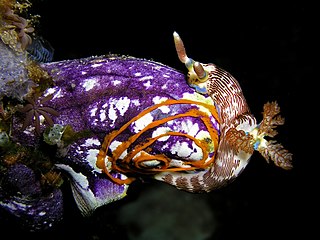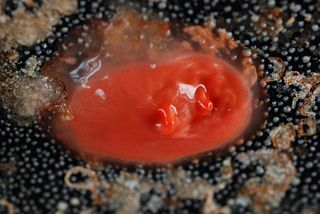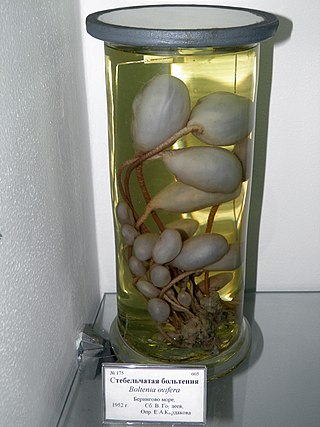
Oligochaeta is a subclass of soft-bodied animals in the phylum Annelida, which is made up of many types of aquatic and terrestrial worms, including all of the various earthworms. Specifically, oligochaetes comprise the terrestrial megadrile earthworms, and freshwater or semiterrestrial microdrile forms, including the tubificids, pot worms and ice worms (Enchytraeidae), blackworms (Lumbriculidae) and several interstitial marine worms.

Ascidia is a genus of tunicates in the family Ascidiidae.

Pyura is a large genus of sessile ascidians that live in coastal waters at depths of up to 80 m (260 feet). Like all ascidians, Pyura are filter feeders. A few species, including Pyura chilensis are commercially fished.

Enchytraeidae is a family of microdrile oligochaetes. They resemble small earthworms and include both terrestrial species known as potworms that live in highly organic terrestrial environments, as well as some that are marine. The peculiar genus Mesenchytraeus is known as "ice worms", as they spend the majority of their lives within glaciers, only rising to the surface at certain points in the summer. Enchytraeidae also includes the Grindal worm, which is commercially bred as aquarium fish food.

Eusynstyela is a genus of ascidian tunicates in the family Styelidae.

Halocynthia is a genus of ascidian tunicates in the family Pyuridae. Species such as H. roretzi are eaten in parts of Asia as a delicacy.

Stolidobranchia is an order of tunicates in the class Ascidiacea. The group includes both colonial and solitary animals. They are distinguished from other tunicates by the presence of folded pharyngeal baskets. This provides the etymology of their name: in ancient Greek, στολίς, ίδος means the "fold" of a cloth. Stolidobranchian sea squirts are also characterized by the complete absence of an abdomen. The abdominal organs of other tunicates are instead located to one side of the pharyngeal basket in this group.

Polycarpa is a genus of ascidian tunicates in the family Styelidae.

Styelidae is a family of ascidian tunicates.
Alloeocarpa is a genus of ascidian tunicates in the family Styelidae.
Bathyoncus is a genus of ascidian tunicates in the family Styelidae.
Chorizocarpa is a genus of ascidian tunicates in the family Styelidae.

Cnemidocarpa is a genus of ascidian tunicates in the family Styelidae.
Gynandrocarpa is a genus of ascidian tunicates in the family Styelidae.

Metandrocarpa is a genus of ascidian tunicates in the family Styelidae.

Polyzoa is a genus of ascidian tunicates in the family Styelidae.
Stolonica is a genus of ascidian tunicates in the family Styelidae.

Symplegma is a genus of ascidian tunicates in the family Styelidae.

Boltenia is a genus of ascidian tunicates in the family Pyuridae.
Drawida is a genus of annelids belonging to the family Moniligastridae.












